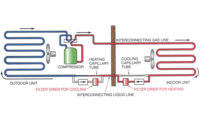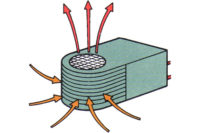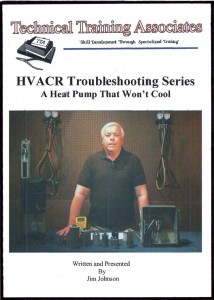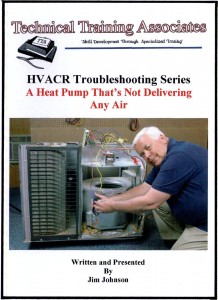Bob is a service technician who is well trained and nationally certified. However, he has sometimes suffered from the same confusion that all technicians occasionally do — the facts that he gathers may or may not point to the obvious cause of the problem or the best solution. But Bob has had something that no one else has. He recalled his long-time HVACR mentor and imagines him accompanying him as “Btu Buddy,” someone who reminded him to take time to stop and think before rushing to judgment, helping keep him on the right track, even with facts that are confusing.
Now, Bob’s company has promoted him to help train a new employee, right out of a school specializing in HVAC, just like Bob was. Bob is now Tim’s Btu Buddy. Tim is anxious to travel with Bob. Tim realizes that he is right out of school, with the theory and lab work that he accomplished in school, but still needs help. He knows that he worked with many of the components of the systems in the school, under ideal conditions with good light and air conditioning. Now it is into the field, sometimes under the house with poor lighting, or out on the rooftop in the sun, where the real action is. He is naturally and normally reluctant, but he has Bob to help guide him.
Bob and Tim were on their way to a service call where the customer is complaining about a high power bill. She said the heat pump that they use for their heat is running all the time and their power bill is really high.
Bob said, “The heat pump would run all the time in this kind of cold weather, but the power bill should not really be excessive. I wonder what they mean by excessive. We will question the customer about that.”
They arrived and were talking to the customer and she said, “The blue light on my thermostat has been on almost all of the time, and the power bill is twice what it was last year. Something is not working right.”
Bob and Tim agreed to look into it. They went to the thermostat first and Tim said, “The blue light is on now; that means that the strip heat is running. It is 40°F outside and the compressor should be able heat the house by itself. Let’s go out and see if the compressor is running.”
They went to the outside unit and Bob said, “I don’t hear the compressor running, but the fan is running. Feel the discharge line and see if it is hot.”
Tim felt the discharge line and said, “It is not hot. It doesn’t feel like it has been warm for a while. I am going to remove the compartment door to the compressor.”
When he had the compartment door off, he felt the compressor and said, “It is hot. It has been running. It must be off from the internal thermostat.”
Bob said, “Get the gauges and connect them. Bring a tank of R-410A refrigerant. If the compressor starts up, we want to be able to add refrigerant quickly, in case the system is low on refrigerant.”
They connected the gauges and looked at the pressures. The pressures looked good; there was refrigerant in the system. The gauge readings just proved there was refrigerant in the system, not whether there was enough to operate the system.
Tim said, “It may take some time for the compressor to cool. Are we just going to wait?”
Bob said, “Turn off the power and disconnect the compressor leads and secure them with electrical tape. Then start the unit again. The fan will pull cold air across the compressor. We will go check the filters and oil the indoor fan motor while the compressor is cooling.”
They serviced the indoor unit and discovered the indoor coil was really dirty. They removed the fan and cleaned the fins on it and cleaned the indoor coil and were ready to start the compressor, so they moved to the outdoor unit.
They turned off the power and reconnected the compressor leads and started the unit. The compressor started up as normal. They observed the gauges and the pressures seemed normal when Tim said, “The dome of the compressor seems to be getting hot. There is plenty of cold gas for cooling the compressor coming back down the suction line, but the compressor seems to be getting hot.”
Bob said, “Use your infrared thermometer to measure the shell temperature and the discharge line gas temperature coming out of the compressor.”
After taking the temperature readings, Tim said, “The dome of the compressor is 140° and the discharge line leaving the compressor is 220°. What is going on?”
Bob said, “Take a long screwdriver and put the blade on the compressor shell and your ear on the handle and listen.”
Bob reached over and shut the disconnect off while Tim listened. Tim then said, “I hear a whistle inside the compressor.”
Bob said, “Just as I suspected, the compressor has an internal discharge gas leak (Figure 1).”
Tim asked, “Why is it getting so hot?”
Bob responded, “Some of the hot gas is being re-compressed and going round and round in the compressor. That is one thing that will cause the compressor to get really hot in a hurry. The compressor will have to be changed out for a new one. It is probably still in the manufacturer’s warranty. We will check that and talk to the homeowner.”
They called the office and found the compressor to still be in warranty and went to talk to the owner.
The owner said, “Go ahead with the work.”
They picked up the new compressor and a two-way liquid line filter drier and started the job.
Tim asked, “What do we do first?”
Bob said, “This is going to be a straight compressor change-out. We are going to:
1. Recover the refrigerant and pull the system into a vacuum.
2. Add dry nitrogen back to the system to about 5 psi.
3. Loosen the bolts on the compressor feet.
4. Open the gauge manifold to the atmosphere.
5. Heat the discharge line and pull it loose.
6. Heat the suction line and pull it loose.
7. Remove the compressor and clean the ends of the tubing, removing all silver solder drops so it will slide into the fittings on the new compressor. You will have to use a file, and be careful you don’t get filings in the system.
8. Set the new compressor in place, remove the connector plugs, and silver solder the new compressor in place.
9. Shut the gauge manifold valves.
10. Cut the liquid line and install the two-way filter drier.
11. Open the gauge manifold valves to the atmosphere.
12. Silver solder the filter drier into place.
13. Close the gauge manifold valves.
14. Pressurize and leak test the system.
15. Start the vacuum pump and take a lunch break.”
After the break, they checked the electronic vacuum gauge and it read 500 microns. They turned off the vacuum pump and waited 15 minutes to see if the vacuum maintained while tightening the compressor mounting bolts and the electrical wiring.
Bob said, “Let’s connect the liquid line to the liquid connections to the refrigerant tank. Bleed the line of air and open the valve to the system and weigh the charge into the system.”
They weighed in the refrigerant and were ready to start the system. Tim said, “I have a few questions:
1. Why use the nitrogen?
2. Why did we keep opening and closing the gauge manifold?
3. How does a two-way filter drier work?”
Bob explained, “The system was in a vacuum after recovering the refrigerant and our only other choice was to open the system to the atmosphere. By using nitrogen, we kept out the atmosphere and moisture and introduced an inert gas that would prevent oxidation and scale buildup with the high temperature solders. This assures a cleaner system.
“When you add heat to the piping to melt the solder loose, the gas in the system will increase in pressure. Never heat a closed system to the temperatures that solder melts. When the joints come apart, they will be under pressure.
“When you finish the heating process, if the system is open to the atmosphere, the gases inside the system will cool and shrink, pulling atmosphere inside the system, you don’t want that.
“There are actually two cores in the two-way filter drier (Figure 2). Check valves assure that when the fluid is flowing one way, one filter is used, when the fluid flows in the other direction, the other filter is used. This keeps the fluid from backwashing either filter.”
Tom exclaimed, “All of these procedures we go through are really intricate.”
Bob said, “This is a sophisticated profession. That is why it pays so well. To be a really good technician, there is a lot to learn and a lot to earn.”
Publication date: 1/19/2015
Want more HVAC industry news and information? Join The NEWS on Facebook, Twitter, and LinkedIn today!











